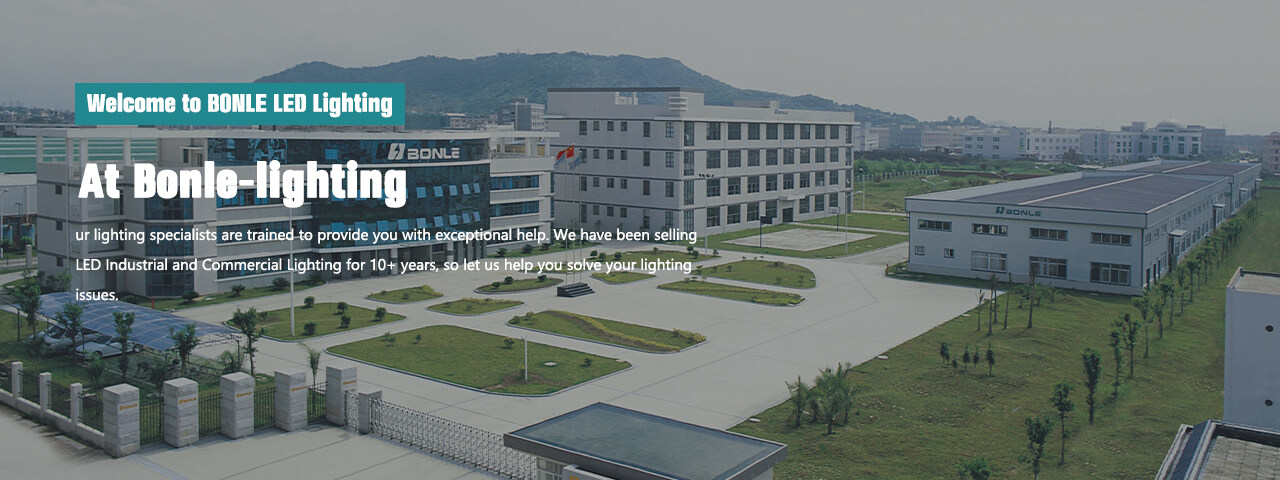

In today's industrial landscape, lighting plays a crucial role not just in visibility but also in productivity, safety, and energy efficiency. Among the various lighting solutions available, LED lighting fixtures stand out for their superior performance, longevity, and cost-effectiveness. In this comprehensive guide, we will delve into the world of LED industrial lighting fixtures, exploring their types, installation, maintenance tips, and how to choose the right fixtures for specific industrial applications.
1. High-Bay Lights
High-bay lights are designed to illuminate large spaces with high ceilings, such as warehouses, factories, and workshops. They provide ample brightness and uniform light distribution, ensuring optimal visibility for tasks and operations conducted in these environments. When installing high-bay lights, consider factors such as ceiling height, layout, and the nature of activities performed in the space.
2. Floodlights
Floodlights are ideal for outdoor industrial spaces, parking lots, and building facades. They offer wide coverage and powerful illumination, enhancing security and visibility during night shifts or in poorly lit areas. Proper positioning and angle adjustment are essential when installing floodlights to maximize their effectiveness in illuminating large outdoor spaces.
3. Task Lights
Task lights are specifically designed to provide focused illumination for detailed tasks and workstations. They are commonly used in assembly lines, inspection stations, and workbenches where precision and clarity are paramount. Task lights come in various forms, including adjustable arm lamps, under-cabinet lights, and overhead task lighting systems, allowing for customized lighting solutions tailored to specific work requirements.
4. Retrofit Kits
Retrofit kits offer a cost-effective solution for upgrading existing lighting fixtures to LED technology. By simply replacing outdated lamps or fixtures with energy-efficient LED modules, businesses can enjoy the benefits of improved lighting quality, energy savings, and reduced maintenance costs. Retrofit kits are versatile and can be installed in various industrial settings, including offices, manufacturing facilities, and retail spaces.
Proper installation and maintenance are essential for maximizing the performance and longevity of LED industrial lighting fixtures. Here are some practical tips to ensure optimal lighting conditions:
Installation Steps and Techniques
Begin by conducting a thorough assessment of the lighting requirements and layout of the industrial space.
Follow manufacturer guidelines and safety protocols during installation to prevent accidents and ensure compliance with regulatory standards.
Position the fixtures strategically to achieve uniform illumination and minimize glare or shadows.
Consider factors such as mounting height, spacing between fixtures, and beam angle adjustment for optimal lighting coverage.
Maintenance Guidelines
Implement a regular cleaning schedule to remove dust, debris, and other contaminants that may accumulate on the fixture surfaces and affect light output.
Inspect the fixtures periodically for signs of damage, such as cracked lenses, loose connections, or corrosion, and address any issues promptly to prevent further deterioration.
Replace faulty components or worn-out parts as needed to maintain consistent performance and prevent potential safety hazards.
Consider investing in automated lighting control systems or remote monitoring tools to streamline maintenance tasks and ensure timely detection of performance issues.
Performance Optimization Strategies
Experiment with different lighting layouts, fixture configurations, and control settings to optimize energy efficiency and lighting quality.
Incorporate daylight harvesting sensors, occupancy sensors, and dimming controls to adjust light levels according to occupancy patterns and natural light availability.
Stay informed about technological advancements and industry trends in LED lighting to leverage new opportunities for enhancing performance and reducing operating costs.
Selecting the appropriate LED industrial lighting fixtures requires careful consideration of various factors to meet specific application requirements and performance criteria. Here are some key considerations to guide the decision-making process:
Brightness (Lumens)
Calculate the required brightness level based on the size of the industrial space, the nature of tasks performed, and the desired lighting intensity.
Choose fixtures with adjustable brightness settings or dimming capabilities to accommodate different lighting needs throughout the day or in different areas of the facility.
Color Temperature
Select the appropriate color temperature (measured in Kelvin) to create the desired ambiance and visual comfort in the industrial space.
Consider factors such as the type of work being performed, the desired color rendering properties, and the preferences of occupants or employees.
Beam Angle
Determine the optimal beam angle based on the mounting height, spacing between fixtures, and the intended lighting coverage area.
Choose fixtures with adjustable beam angles or interchangeable optics to fine-tune the distribution of light and minimize light spillage or waste.
Durability and Reliability
Evaluate the durability and reliability of LED fixtures based on factors such as construction materials, ingress protection ratings (IP), and warranty coverage.
Prioritize fixtures with robust designs, high-quality components, and proven performance track records to ensure long-term reliability and minimal maintenance requirements.
Cost and Energy Efficiency
Conduct a cost-benefit analysis to compare the upfront investment and long-term operational savings associated with different LED lighting options.
Consider factors such as energy efficiency ratings, potential utility rebates or incentives, and projected maintenance costs to determine the overall return on investment (ROI) of each lighting solution.
Environmental Impact
Assess the environmental impact of LED lighting fixtures based on factors such as energy consumption, carbon emissions, and recyclability.
Choose fixtures with eco-friendly features, such as energy-efficient designs, recyclable materials, and compliance with environmental regulations and sustainability standards.
In conclusion, LED industrial lighting fixtures offer a versatile, energy-efficient, and cost-effective solution for illuminating industrial spaces and enhancing productivity, safety, and sustainability. By understanding the different types of LED fixtures available, mastering the installation and maintenance techniques, and selecting the right fixtures for specific application needs, businesses can optimize their lighting systems to create optimal working environments and achieve long-term cost savings and performance improvements. Whether it's high-bay lights for warehouses, floodlights for outdoor areas, task lights for workstations, or retrofit kits for existing fixtures, LED lighting offers endless possibilities for transforming industrial spaces into well-lit, efficient, and environmentally friendly environments.
Email format error
Email cannot be empty
Email already exists
6-20 characters(letters plus numbers only)
The password is inconsistent
Email format error
Email cannot be empty
Email does not exist
6-20 characters(letters plus numbers only)
The password is inconsistent